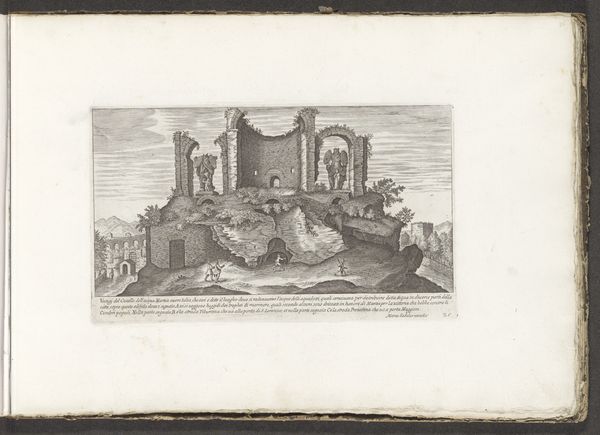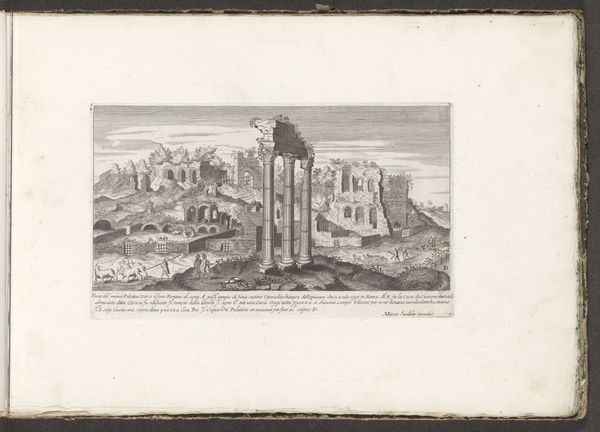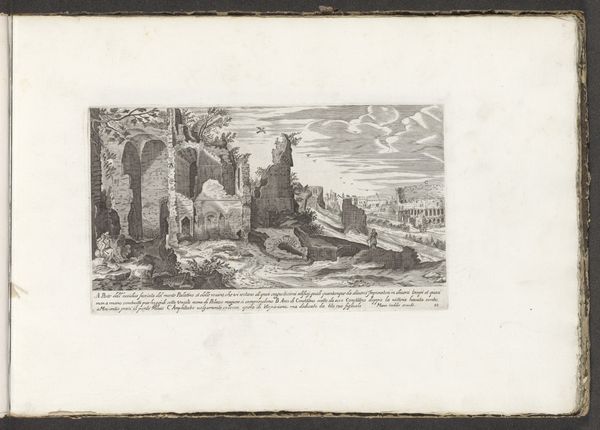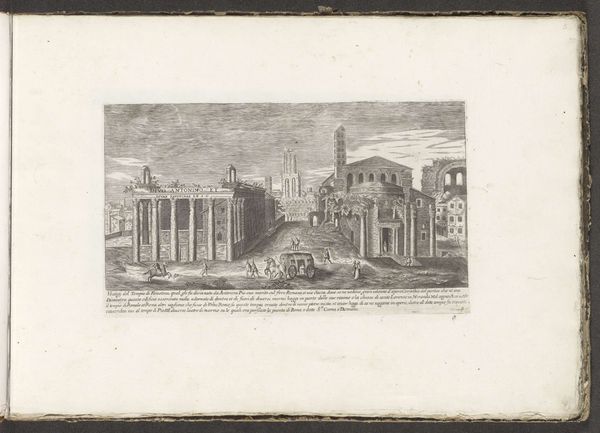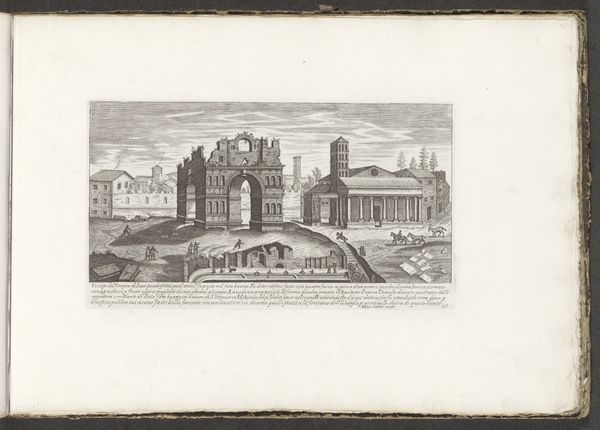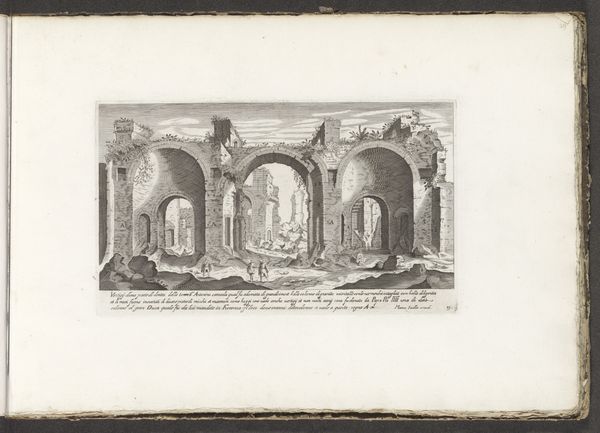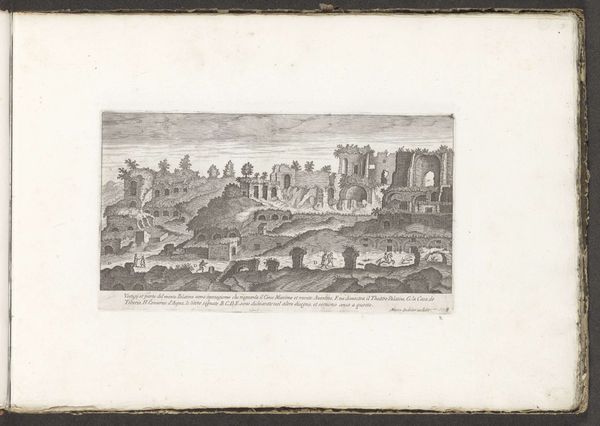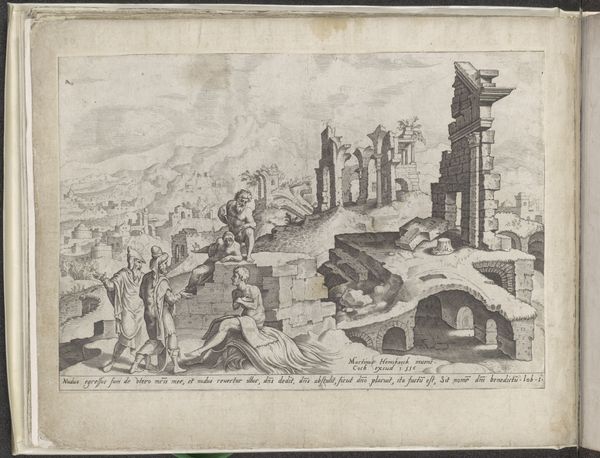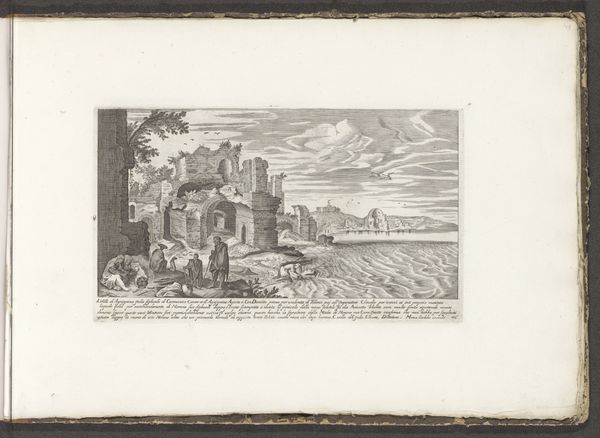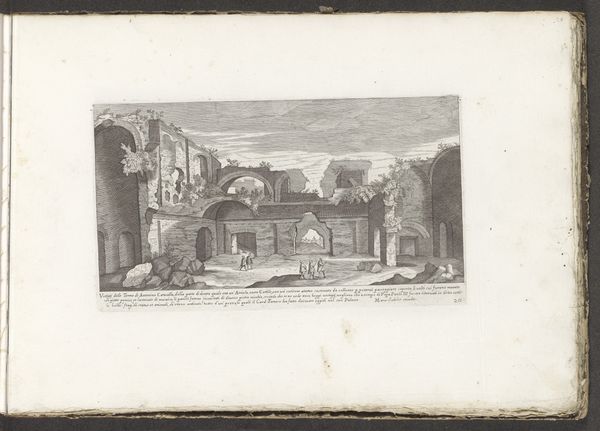
drawing, tempera, print, engraving
#
drawing
#
baroque
#
tempera
# print
#
landscape
#
coloured pencil
#
ancient-mediterranean
#
engraving
Dimensions: height 159 mm, width 268 mm
Copyright: Rijks Museum: Open Domain
Curator: This is “Ruïne van een tempel bij Pozzuoli,” or "Ruins of a Temple near Pozzuoli", a print created around 1680 by Hieronymus Ferri. Editor: It's so evocative! The delicate lines of the engraving give the scene such an air of fragility and decay, almost dreamlike. I wonder about the story being told. Curator: Ferri was deeply influenced by the architectural ruins of Italy. This piece, like much of his work, highlights the way these structures became integrated into the landscape and the narratives evolving from encounters with antiquity. We might consider it through a lens of cultural memory, or the political uses of ancient sites in the 17th Century. Editor: Precisely! It's not just about nostalgia for a lost classical past, is it? This engraving situates viewers – these tiny figures with their pack animals and dog – squarely within a contemporary moment of encountering that past. Are they simply observers, or are they claiming a right to that history, that landscape? Who, then, had access to those claims? Curator: It definitely asks questions about ownership, especially given how these landscapes become markers of status. You see patrons commissioning artwork specifically to underscore the scope of their access and to legitimize their claims. Think of it as early image-driven propaganda. Editor: Right. And propaganda, in itself, always presents such nuanced issues of power, gender and class. If access and ownership were implicitly masculine, how were the lives of women implicated? The landscape almost performs a kind of unearthing of those narratives through careful inspection. It invites those conversations. Curator: Exactly. Consider also the formal artistic constraints placed on artists creating "landscape" – even those with explicit historical markers. There's this implicit need for dramatic narrative that becomes intertwined with political ambition and patronage power. Editor: Ferri’s print prompts us to critically reassess those entanglements and assumptions by revealing how art participates in, and sometimes challenges, power dynamics. Curator: Indeed. It becomes this palimpsest where we are excavating histories that aren’t just ancient, but those more immediate social and political contexts, as well.
Comments
No comments
Be the first to comment and join the conversation on the ultimate creative platform.

